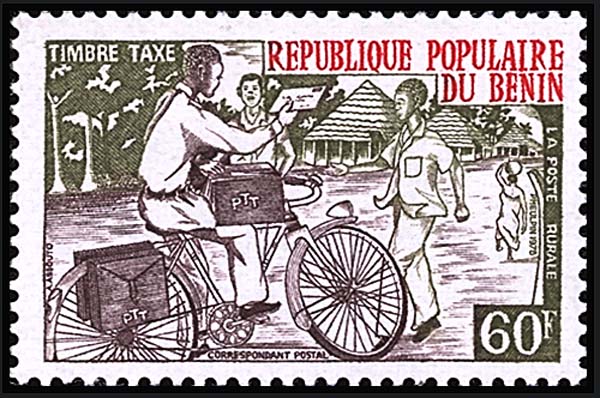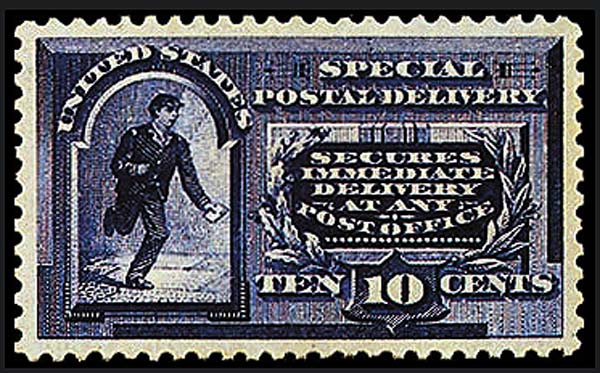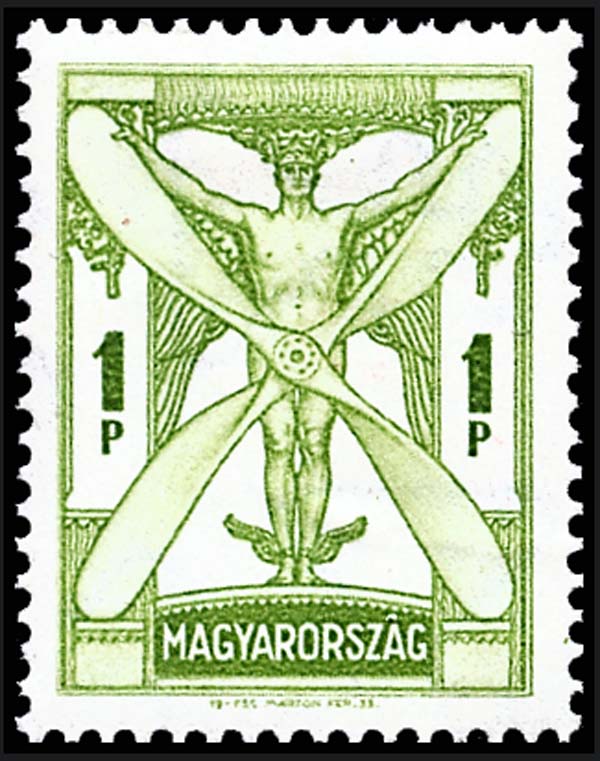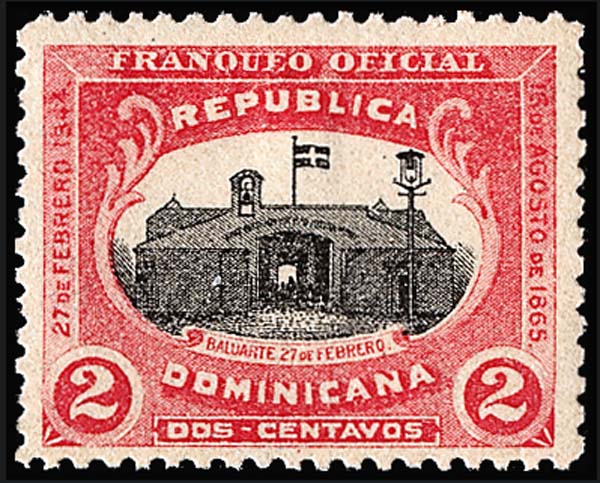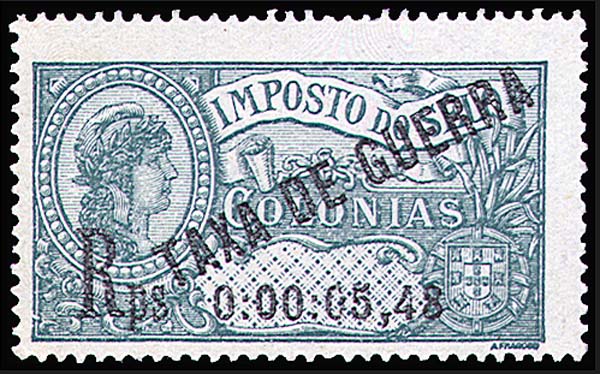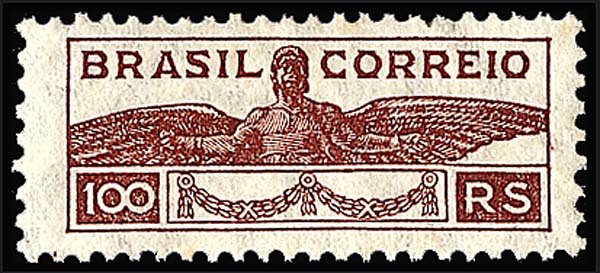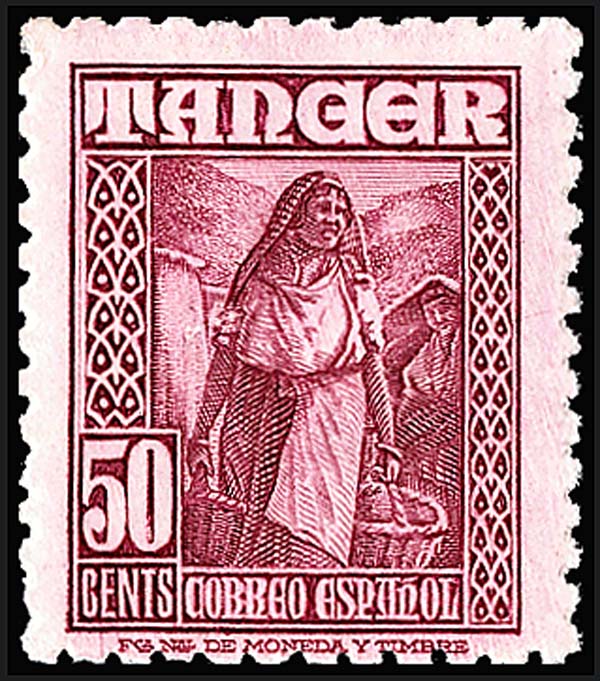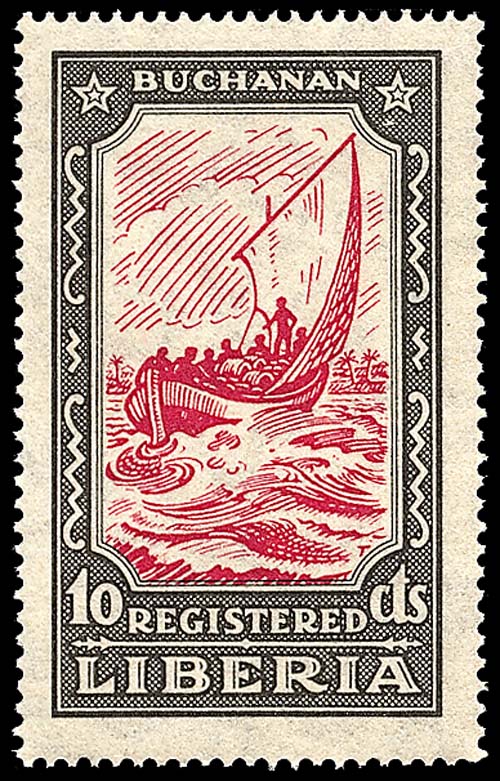POSTAL UPDATES
insights
Strange stamps lurk at the back of the book
By Joe Kennedy
The Scott Standard Postage Stamp Catalogue lists regular postage stamps first with catalog numbers that have no prefix letters. Stamps that are used to prepay additional or special services, such as airmail or special delivery, are listed after the regular postage stamps with catalog numbers that are prefixed with a letter or letters that indicate what the stamps were used for.
For this reason, these stamps are called "back-of-the-book" stamps. Are they fun to collect? I think yes.
Back-of-the-book stamps are sometimes used instead of, and sometimes in addition to, regular stamps. Except for United States and possessions revenue and telegraph stamps listed in the Scott Specialized Catalogue of United States Stamps and Covers, each back-of-the-book stamp must have some kind of postal connection for it to be listed in any of the Scott catalogs.
Many back-of-the-book stamps pay for special postal services, such as airmail (prefix "C"), registration (prefix "F") or special delivery (prefix "E").
A Liberian 10¢ gray and carmine Passengers Going Ashore From Ship registration stamp (Scott F30) is shown in Figure 1.
Other stamps add a small financial burden to the sender. Semipostal stamps (prefix "B"), for example, include postage plus a charity surcharge for what is deemed to be a worthy cause. The use of semipostal stamps is entirely voluntary: if you don't want to contribute, don't use them.
Semipostals are usually easy to spot because they often have two denominations, one for the postal value and a second for the charity donation.
Not all semipostals show a second number. The 20-rappen+(5rp) rose-red Princess Elsa semipostal stamp of Liechtenstein (Scott B12) shown in Figure 2 bears only the postal denomination. The charity surtax is not expressed on the stamp.
All three United States semipostal stamps issued to date are nondenominated. The postal and charity values of the first two, the Breast Cancer Research semipostal stamp (Scott B1) and the Heroes of 2001 semipostal stamp (B2), fluctuated over time as postal rates changed.
The listing policies of the Scott catalogs can sometimes make it difficult to identify semipostal stamps. In some cases, such as Italy Scott 239-41, where a stamp set includes both regular postage and semipostal stamps, all stamps in the set are listed together as regular postage stamps.
Despite their regular postage catalog numbers, Italy Scott 240 and 241 are both semipostal stamps.
Unlike semipostal stamps, usage of postal tax stamps (prefix "RA") is mandatory, and all mail posted for a stated period of time must bear them.
A Brazilian 100-reis Icarus From the Santos-Dumont Monument at St. Cloud (France) postal tax stamp (Scott RA1) is shown in Figure 3. For a period beginning Oct. 1, 1933, this stamp was required on all mail sent to South American countries, the United States and Spain.
Tax funds collected through the sale of the stamp were used for airport construction in Brazil.
War tax stamps (prefix "MR") and delivery tax stamps (prefix "ER") form separate categories of postal tax stamps. War tax stamps raise funds to pay for war. Delivery tax stamps pay a fee required for delivery of letters by a private delivery service.
A Portuguese Indian 0.00.05,48-rupia blue-green war tax stamp (MR1) is shown in Figure 4. Now there's a stamp denomination that you don't see every day.
Official stamps (prefix "O") are for use by governmental agencies rather than by the general public.
A Dominican Republic 2-centavo scarlet and black Bastion of February 27 Official stamp (Scott O1) is shown in Figure 5.
Some back-of-the-book stamps are rather far off the beaten postal path. Portuguese, French and Spanish franchise stamps (prefix "S") and the life insurance stamps of New Zealand (prefix "OY") fall into this category.
Franchise stamps enable a private person or nongovernmental organization to send mail without having to pay for the postage.
In New Zealand, life insurance was provided by a government-owned company. The life insurance stamps were for use in franking the life insurance company's mail. The company's symbol was a lighthouse, and lighthouses figure in the design of all life insurance stamps.
A 15¢ Dog Island Lighthouse life insurance stamp (Scott OY49) is shown in Figure 6.
Back-of-the-book stamps can be a bit tricky to identify.
Airmail stamp designs often have an aviation theme, such as a mail-carrying airplane, for example the De Havilland biplane on the United States 24¢ airmail stamp (Scott C6). But the Hungarian 1-pengo Flight Holding Propeller airmail stamp (C34) shown in Figure 7 depicts a flier of a very different kind.
Most airmail stamps have a service inscription identifying them as airmail stamps. Such inscriptions include "air mail," "Flugpost," "Correos Aereos," "Luchtpost" and "Poste Aerienne."
Aviation themes can often be false clues, however, because many stamps that are not airmail stamps have aviation themes. Likewise, some airmail stamps have other themes instead of aviation, and some even lack any type of airmail inscription.
There are also many types of hybrid airmail stamps: airmail semipostal ("CB"), airmail semipostal Official ("CBO"), airmail special delivery ("CE"), airmail registration ("CF"), airmail semiofficial ("CL"), airmail Official ("CO"), airmail parcel post ("CQ"), airmail local ("LC"), airmail postal tax ("RAC"), military airmail ("MC"), military airmail special delivery ("MCE"), occupation airmail ("NC"), occupation airmail semipostal ("NCB") and occupation airmail special delivery ("NCE").
Special delivery is a service that provides immediate delivery of mail upon receipt at the delivery post office. The designs of special delivery stamps (prefix "E") often communicate the need for speed.
The first five U.S. special delivery stamps picture a running messenger. A U.S. 10¢ blue Running Messenger special delivery stamp (Scott E2) is shown in Figure 8.
Other speedy elements of special delivery stamp design include messengers on bicycles and motorcycles; speeding cars, trucks, trains and airplanes; and the mythological winged horse Pegasus and Mercury, messenger of the gods.
Postage due stamps (prefix "J") do not pay postage. They are used to account for funds collected on mail that is unpaid or short paid.
Postage due stamps can be drab affairs, often with nothing more interesting than a numeral as the main element of the stamp design. Many postage due stamps do not even include an inscription of the country's name.
The 60-franc Mail Delivery postage due stamp of Benin (Scott J48) shown in Figure 9 certainly does not fit the pattern for postage due stamps. The design looks like it would be more appropriate for a special delivery stamp.
Postage due inscriptions include "Timbre Taxe," "Chiffre Taxe," "Te Betalen," "To Pay," "Port," "Porto," "Multa," "Taxa Devida" and "Takse."
Parcel post provides for the delivery of bulkier packages at reduced rates but with less speedy service than first-class mail. Parcel post stamps have catalog numbers prefixed with the letter "Q."
The design of the Peruvian 5-centavo dark blue Numeral parcel post stamp (Scott Q3) shown in Figure 10 looks like it would make a good postage due stamp.
Belgium's parcel post and railway stamps (also prefixed "Q") were primarily used for nonpostal delivery by the Belgian state railway. Nonpostal railway stamps are not listed in the Scott standard catalog and other Scott catalogs.
Finding Belgian parcel post and railway stamps used with postal cancellations is quite a challenge.
A Belgian 30-centime chestnut brown Engineer at Throttle parcel post and railway stamp (Scott Q269) bearing a postal cancellation is shown in Figure 11.
The listing policy for the Scott catalogs excludes most local stamps. Those that are listed, however, have catalog numbers prefixed with "L." A Spanish Morocco-Tangier 50-centavo deep claret Moroccan Women local stamp (Scott L20) is shown in Figure 12.
Back-of-the-book stamps might not be your idea of pure excitement, but they can be very interesting.
Some collectors eventually become so fascinated by one or more type of back-of-the-book stamps that they virtually forget about the regular postage section.
Are back-of-book stamps just the troublesome bric-a-brac of stamp collecting or are they an endearing and enduring puzzle for the curious collector?
Fortunately each of us gets to decide the answer to this question in our own way.
MORE RELATED ARTICLES
Headlines
-
US Stamps
Oct 7, 2024, 3 PMMcMurtrie dismissed as APS education director following Sept. 21 arrest
-
US Stamps
Oct 7, 2024, 12 PMVasiliauskas named president of Mystic Stamp Co.
-
US Stamps
Oct 6, 2024, 5 PMApgar souvenir card available
-
US Stamps
Oct 6, 2024, 4 PMFirst Continental Congress and U.N. stamps receive Scott catalog numbers
